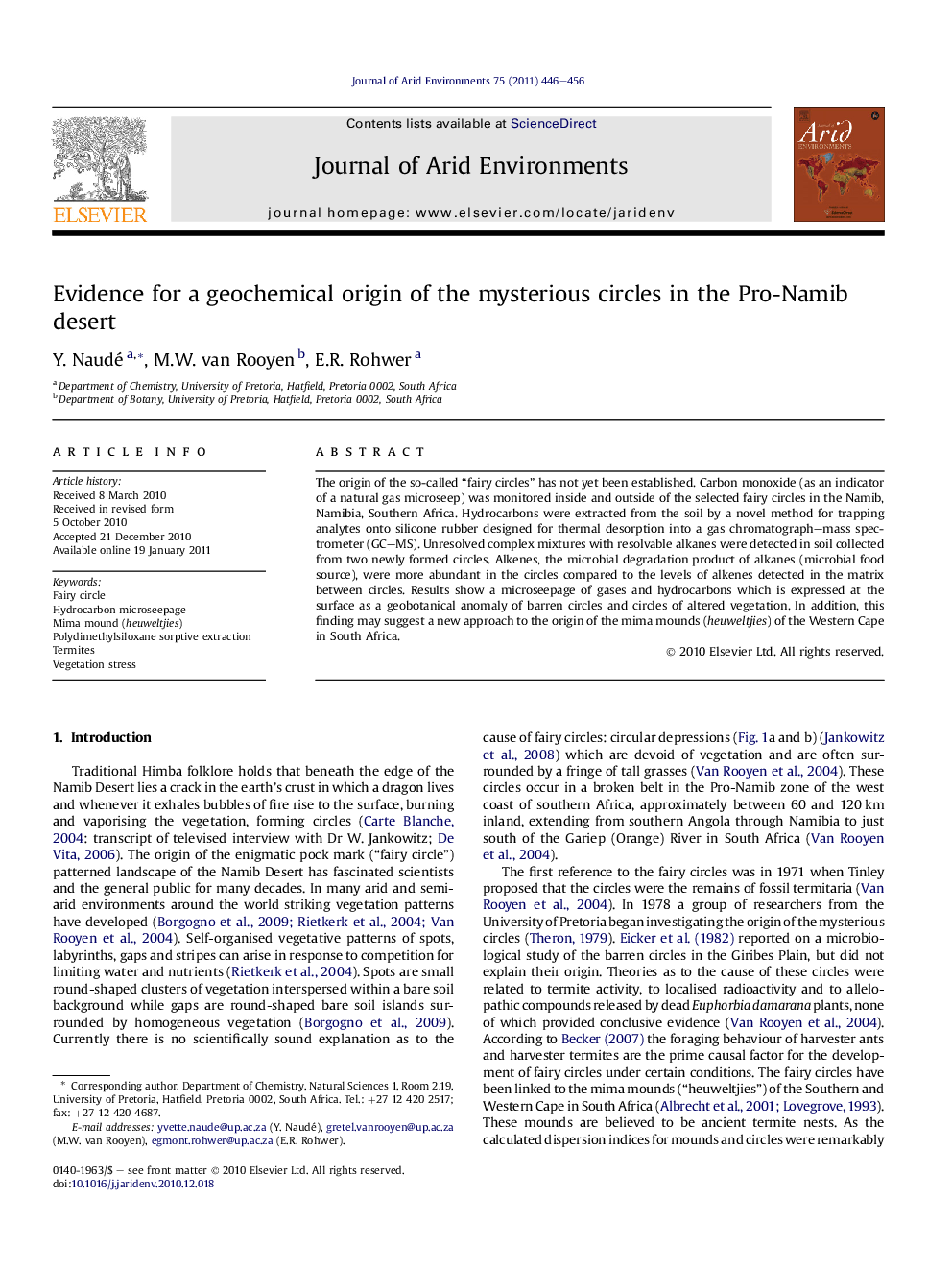| Article ID | Journal | Published Year | Pages | File Type |
|---|---|---|---|---|
| 4393759 | Journal of Arid Environments | 2011 | 11 Pages |
The origin of the so-called “fairy circles” has not yet been established. Carbon monoxide (as an indicator of a natural gas microseep) was monitored inside and outside of the selected fairy circles in the Namib, Namibia, Southern Africa. Hydrocarbons were extracted from the soil by a novel method for trapping analytes onto silicone rubber designed for thermal desorption into a gas chromatograph–mass spectrometer (GC–MS). Unresolved complex mixtures with resolvable alkanes were detected in soil collected from two newly formed circles. Alkenes, the microbial degradation product of alkanes (microbial food source), were more abundant in the circles compared to the levels of alkenes detected in the matrix between circles. Results show a microseepage of gases and hydrocarbons which is expressed at the surface as a geobotanical anomaly of barren circles and circles of altered vegetation. In addition, this finding may suggest a new approach to the origin of the mima mounds (heuweltjies) of the Western Cape in South Africa.
Research highlights► Gases were monitored inside and outside of selected “fairy circles” (Namibia). ► Hydrocarbons were extracted from soil by a novel silicone rubber sorption method. ► Our results show a microseepage of gases and low volatility hydrocarbons.► Fairy circles are geobotanical surface expressions of geochemical microseepage. ► A new interpretation of the origin of the heuweltjies in South Africa is suggested.
